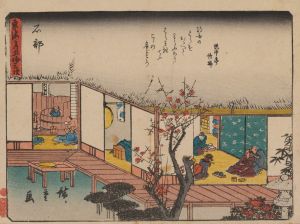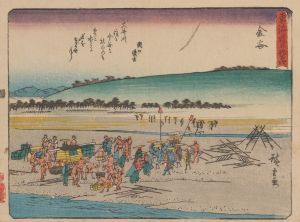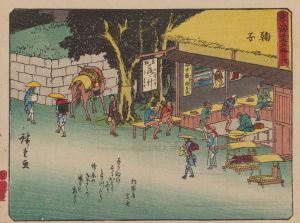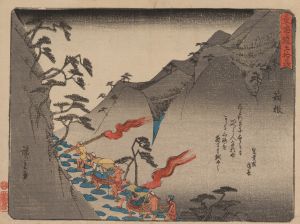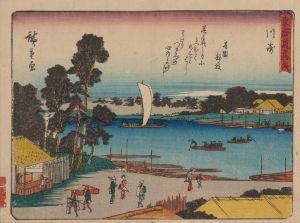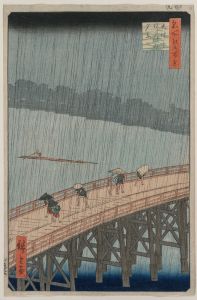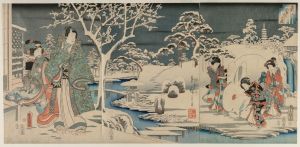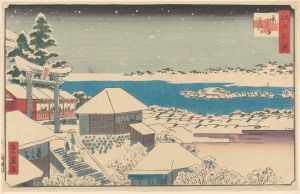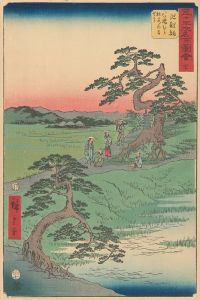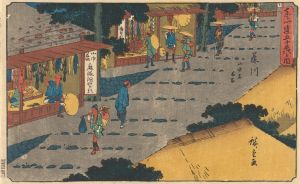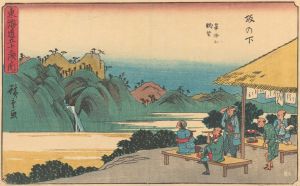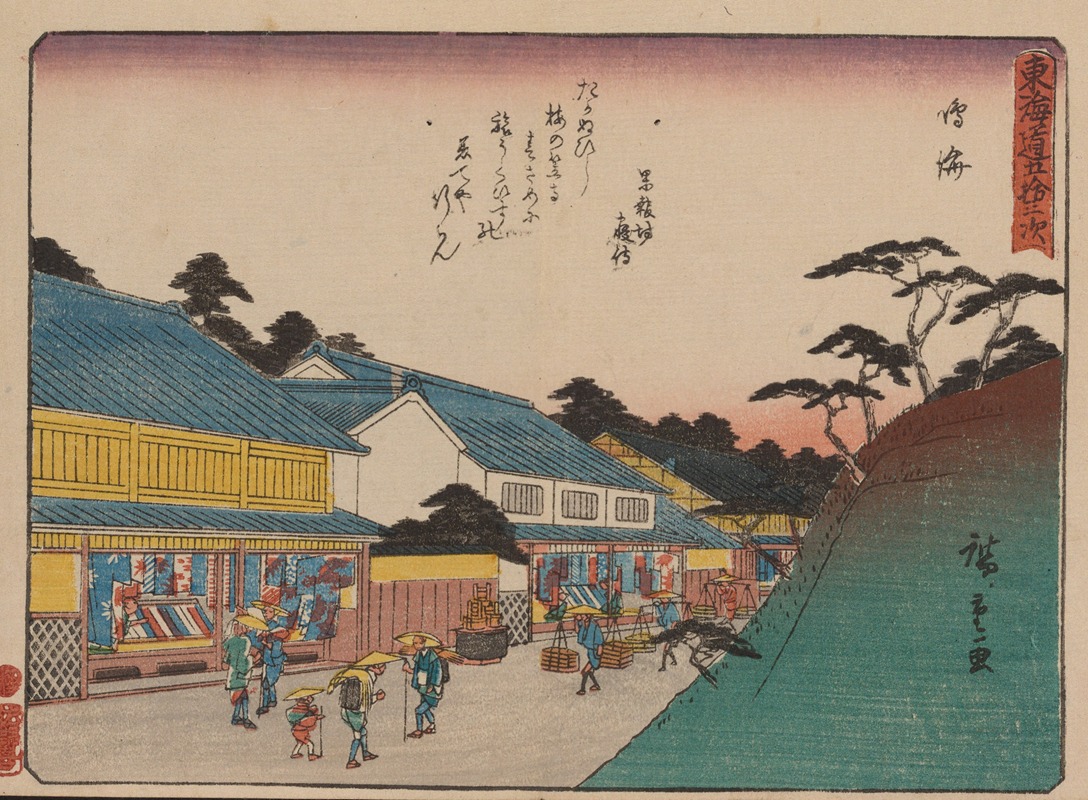
Tokaido gojusantsugi, Pl.41
A hand-painted replica of Andō Hiroshige’s masterpiece Tokaido gojusantsugi, Pl.41, meticulously crafted by professional artists to capture the true essence of the original. Each piece is created with museum-quality canvas and rare mineral pigments, carefully painted by experienced artists with delicate brushstrokes and rich, layered colors to perfectly recreate the texture of the original artwork. Unlike machine-printed reproductions, this hand-painted version brings the painting to life, infused with the artist’s emotions and skill in every stroke. Whether for personal collection or home decoration, it instantly elevates the artistic atmosphere of any space.
Andō Hiroshige, a renowned Japanese ukiyo-e artist of the Edo period, is celebrated for his landscape prints and his series "The Fifty-three Stations of the Tōkaidō" (Tōkaidō Gojūsan-tsugi). This series, created after Hiroshige's journey along the Tōkaidō road in the early 1830s, captures the scenic beauty and cultural significance of the route connecting Edo (modern-day Tokyo) to Kyoto. The series consists of 55 prints, including the starting point, Nihonbashi, and the terminus, Kyoto, along with the 53 stations in between.
Plate 41 of this series is titled "Miya, Atsuta Shrine" (Miya, Atsuta no Miya). This particular print depicts the Miya station, which is located in present-day Nagoya, Aichi Prefecture. The Miya station was notable for its proximity to the Atsuta Shrine, one of Shinto's most significant shrines, believed to house the sacred sword Kusanagi, one of the three Imperial Regalia of Japan. The shrine's historical and religious importance made Miya a significant stop along the Tōkaidō.
In Hiroshige's depiction, the scene is bustling with activity, reflecting the vibrant life around the Miya station and the Atsuta Shrine. The print captures a procession of pilgrims and travelers, indicative of the constant flow of people visiting the shrine. The composition is dynamic, with a sense of movement and the lively atmosphere of a busy travel hub. Hiroshige's use of color and line work is characteristic of his style, with delicate gradations and attention to detail that bring the scene to life.
The Tōkaidō series, including Plate 41, is renowned for its innovative use of perspective and composition, which were influenced by Western art techniques that began to permeate Japan during the Edo period. Hiroshige's ability to blend traditional Japanese aesthetics with these new influences is evident in the way he captures the landscape and human activity. His work provides a window into the daily life and cultural landscape of 19th-century Japan, offering insights into the social and economic conditions of the time.
Hiroshige's prints were not only artistic achievements but also served as travel guides and souvenirs for those who journeyed along the Tōkaidō. They were widely popular and contributed to Hiroshige's reputation as a master of the ukiyo-e genre. The series has had a lasting impact on both Japanese and Western art, influencing artists such as Vincent van Gogh and Claude Monet, who admired Hiroshige's ability to convey mood and atmosphere through landscape.
Today, Hiroshige's "The Fifty-three Stations of the Tōkaidō" series, including Plate 41, is celebrated for its artistic merit and historical significance. The prints are preserved in museums and collections worldwide, continuing to captivate audiences with their beauty and historical context. Hiroshige's work remains a testament to the rich cultural heritage of Japan and the enduring appeal of the ukiyo-e art form.





